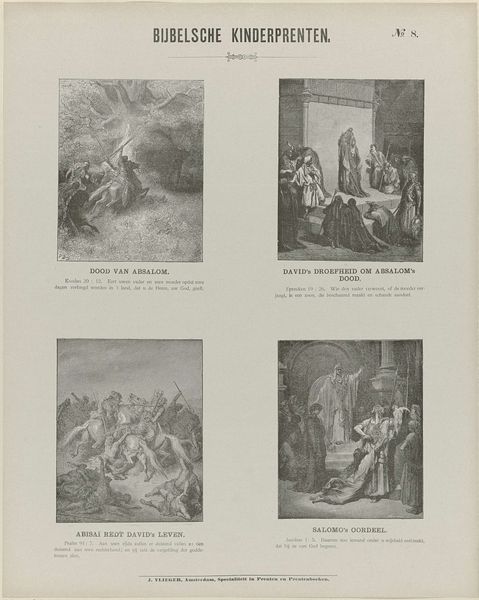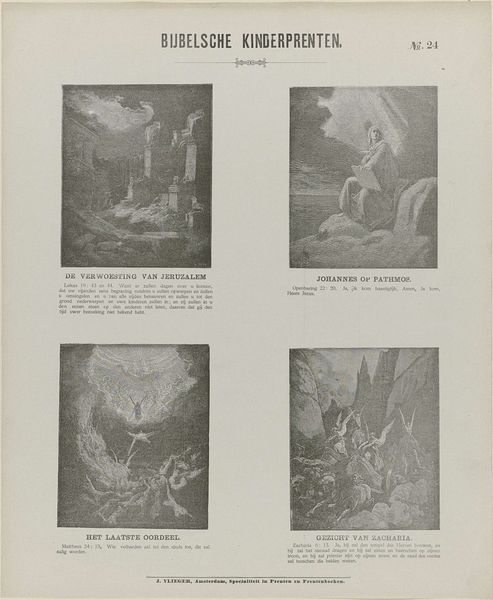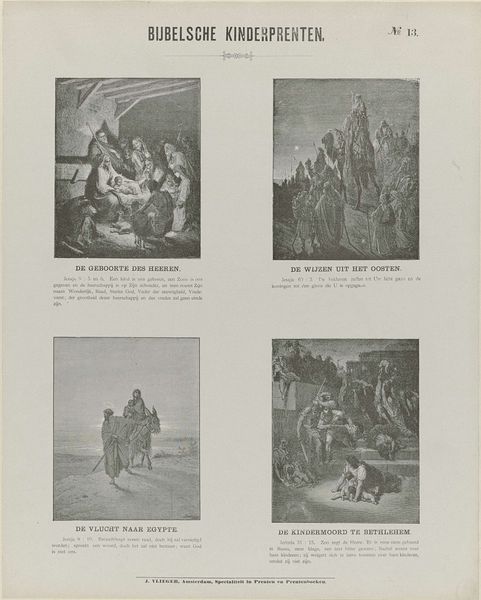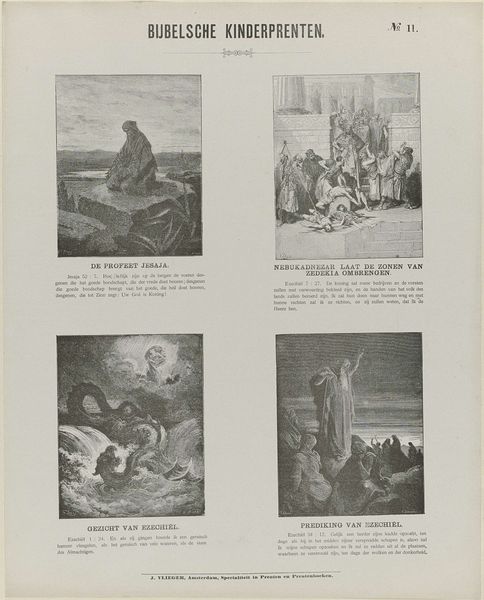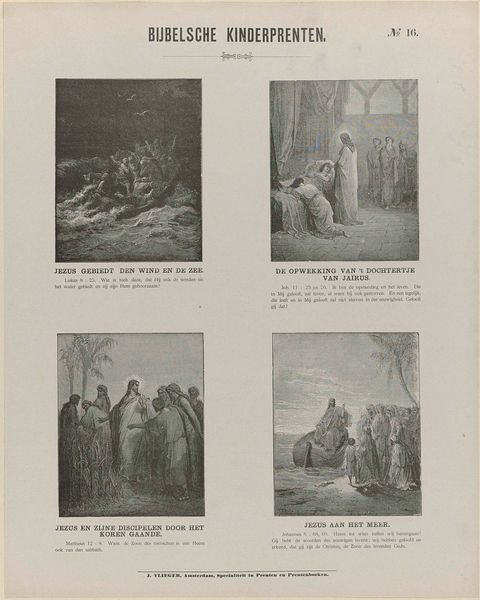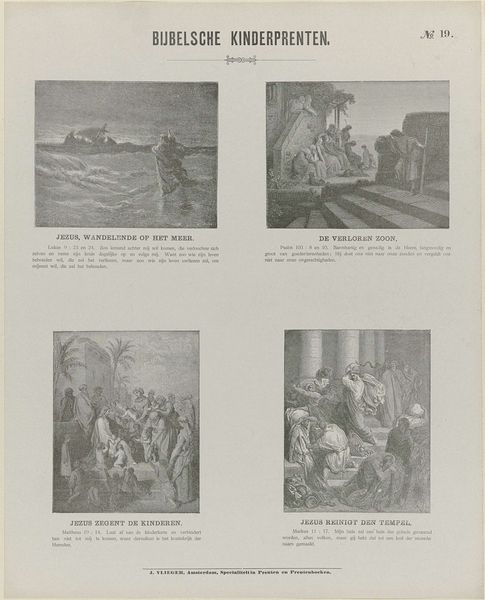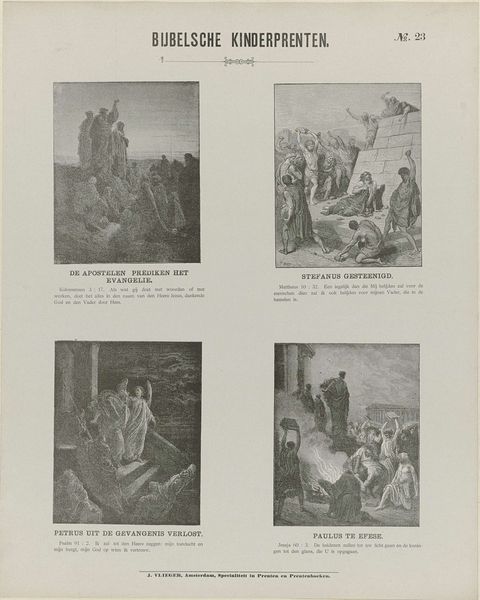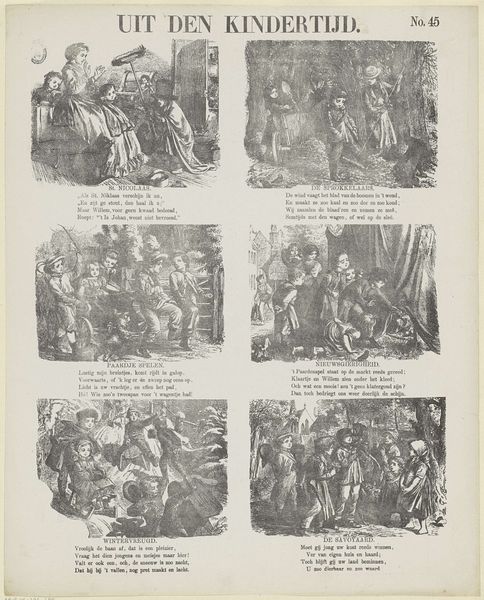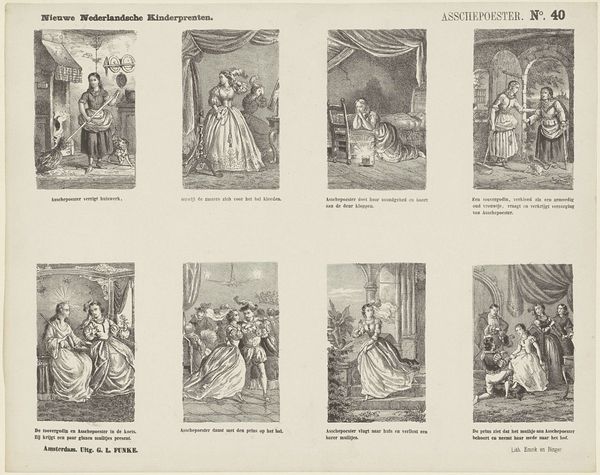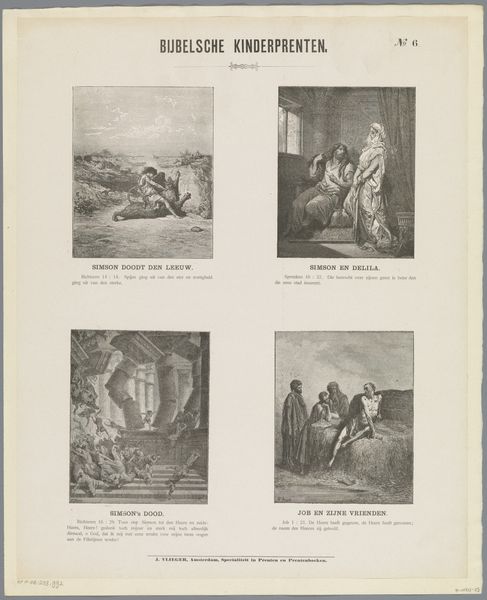
print, engraving
#
narrative-art
#
dutch-golden-age
# print
#
typeface
#
engraving
#
historical font
Dimensions: height 429 mm, width 345 mm
Copyright: Rijks Museum: Open Domain
Curator: "Bijbelsche Kinderprenten," or Biblical Children's Prints, a collection of engravings from 1869 to 1908 by Charles Laplante, held at the Rijksmuseum. They are quite somber, despite the title, particularly considering it is for children! What can we learn from this work? Editor: The use of engraving is interesting. The precision suggests mass production. How does that relate to the themes depicted - religious narrative - and the intended audience of children? Curator: Precisely! This wasn't a unique, precious object but a reproduced image meant for wide consumption. Think about the labor involved: the engraver meticulously transferring the images, the printing press churning out copies. It begs the question, were these prints intended for the children of wealthy families? What class consumed them? Editor: Perhaps to educate a new middle-class? I imagine such images could serve an educational and moralizing purpose within a growing literate society. How accessible would the actual creation of the prints have been to those children and adults? Curator: That’s a crucial question. Printmaking at this level was specialized labor. Children encountering these images were far more likely to be consumers of media than producers. It reinforces a hierarchy, doesn't it? Art, even religious art intended for children, relies on very specific conditions of labor and dissemination. Editor: I had never considered religious images in that perspective. It shifts from purely a question of iconography towards the social role and function of art making! Thank you for shining a light on that dimension. Curator: Indeed, by considering the materials and the process of creation, the act of looking turns from one of passive contemplation to one of active analysis. A materialist perspective invites us to consider not only the ‘what’ but also the ‘how’ and ‘for whom’ of art.
Comments
No comments
Be the first to comment and join the conversation on the ultimate creative platform.
